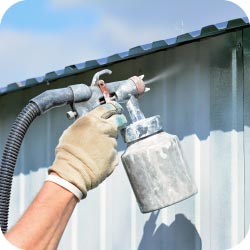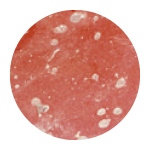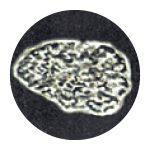
How Does Paint Overspray Happen?
Crews Painting
Crews working on nearby water towers, buildings or stadiums begin painting utilizing spray guns.
Wind Carries Spray
Paint from spray guns becomes airborne and can travel several miles before landing on nearby surfaces
Paint Sticks To Vehicles
Paint particulates land on vehicle paint and other surfaces and quickly begins to bind.

Paint Coatings and Linings
These materials are commonly used for corrosion protection and are usually applied by spray, brush or roller. Common types of coatings and linings are Epoxies, Urethanes, Alkyds and Acrylics

Industrial Fallout / Emissions
Plant operations create various types of emissions such as Petro Chemical by-products and Post Stack Combustion. Other manufacturing operations canproduce various types of emissions such as Fly ash, Coke and other chemical releases.

Roofing / Tar / Oil Deposits
Surfacing materials used on roofs such as Polyurethane Foam or Asphalt, Tar and Oil used on roadways are examples of these types of overspray.

Metals
Metal fabrication, railroad transportation, sandblasting and mining operations produce metal oxide by-products. These by-products, commonly referred to as rail dust, can rust after settling on the finish.

Cement / Mineral Deposits
Cement, salt, lime, calcium and other minerals may result in overspray damage to the paint finish and other surfaces if left untreated.

Acid Rain
Industrial pollutants and emissions drift into the air and may combine with rain, snow or morning dew to form acids. These diluted acids settle on the vehicles surface and as water evaporation occurs, the acid becomes of a higher concentration and may damage the surfaces leaving slight depressions or craters.
